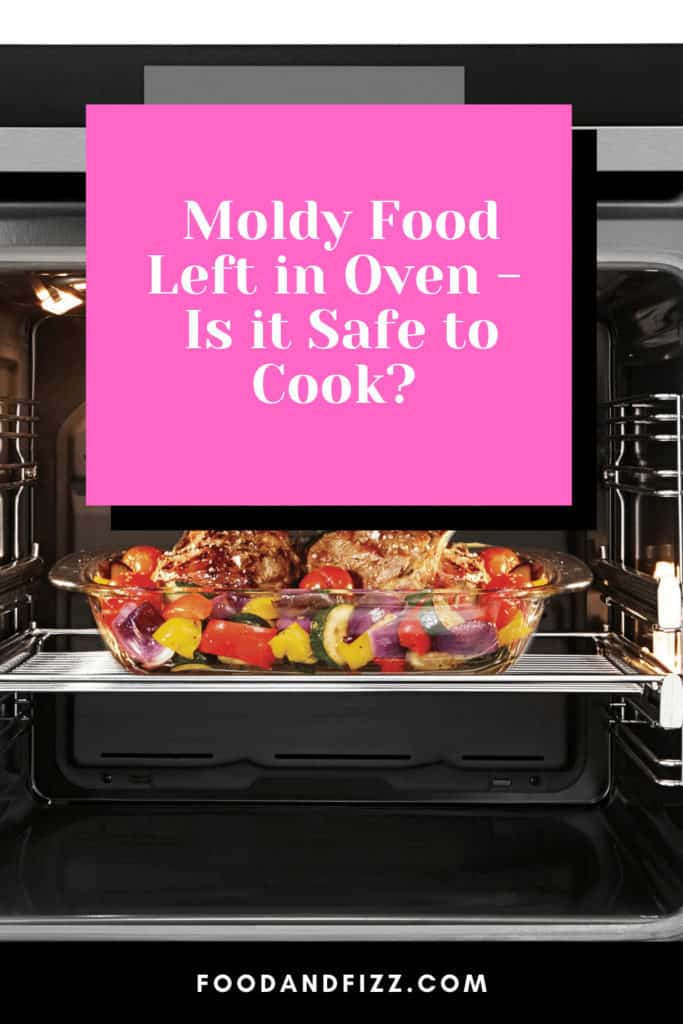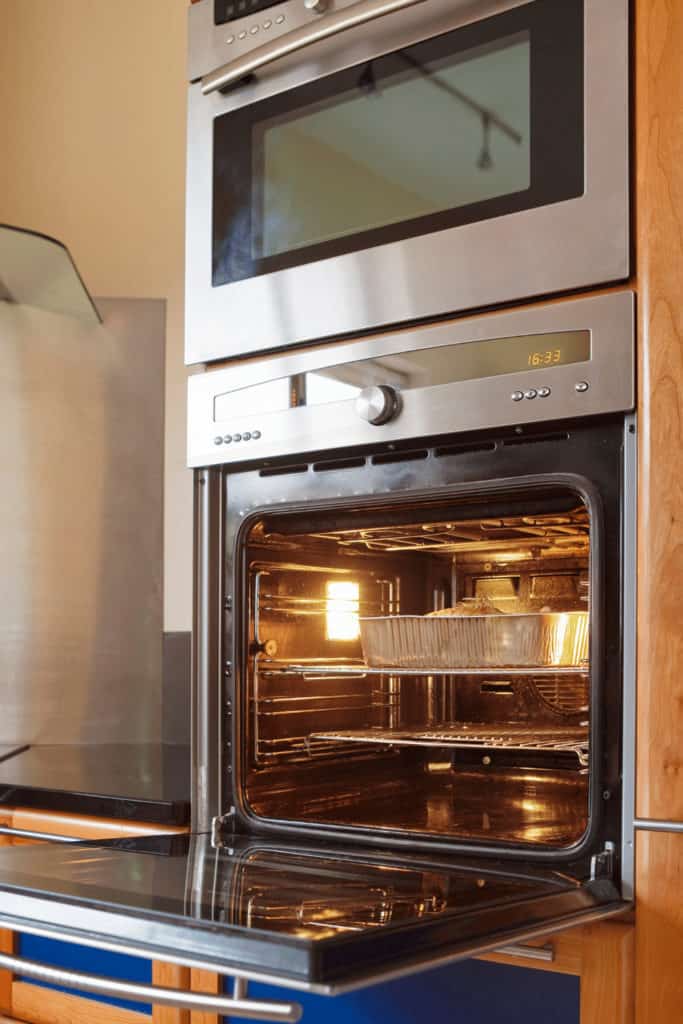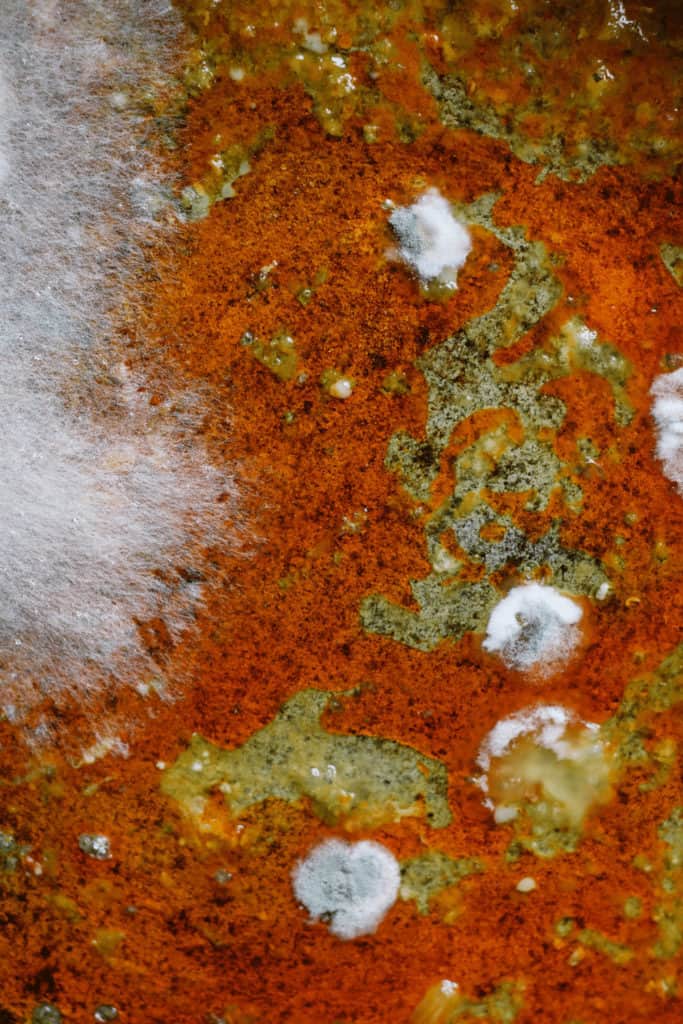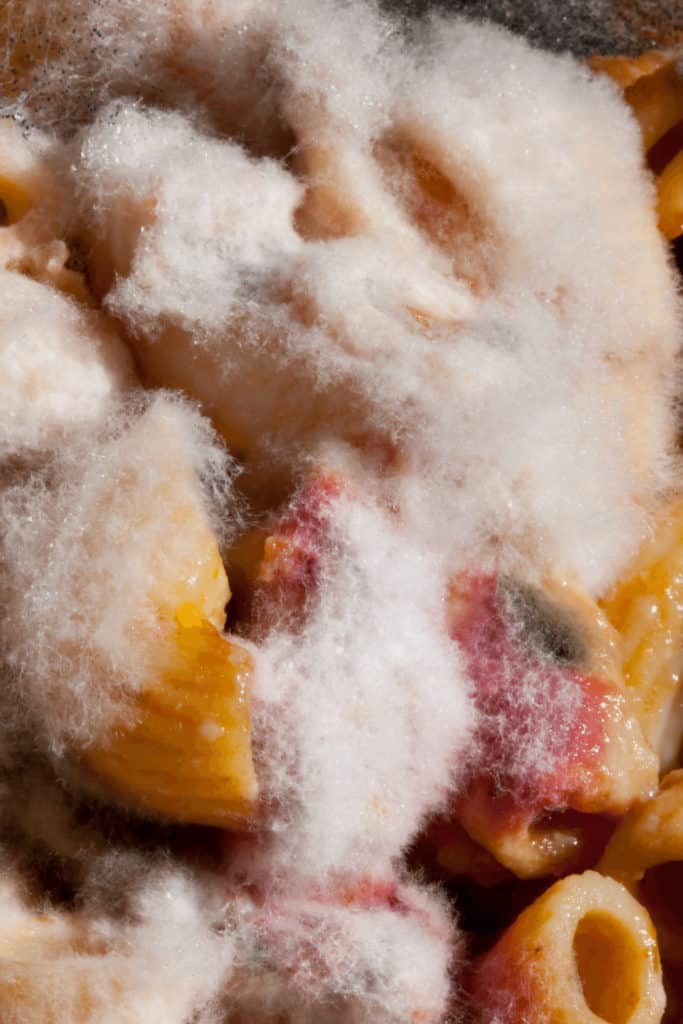Moldy Food Left in Oven.
I’m sure it’s happened to you too. You go away for the weekend, forgetting that the lasagne you left cooling in the oven hasn’t been moved to the fridge yet. Oh, dear!
It’s a long weekend, and you just know that by the time you get back on Tuesday evening, your mother’s lasagna recipe will have developed a new ingredient—mold. What to do? Can you scrape off the top layer, melt a new sprinkle of cheddar over it, and serve?
I was torn. It would be so convenient to heat and serve that lasagne, instead of having to prepare a new dinner from scratch, but was it safe to cook and serve to my family?
Worried, I called my aunt who’s a high school science teacher. She answered all my questions in detail while I prepared a fresh meal for my family.
Moldy Food Left in Oven, Safe to Cook?
It is not safe to cook in an oven where moldy food was left. While some believe that heating mold spores will destroy the mold, this is not guaranteed, and mold produces toxins called aflatoxin that is heat resistant. The oven needs to be cleaned before you cook food in it again.

The Truth About Moldy Food
You may wonder why food would become moldy. It’s not like I had left the lasagne out in the sun all weekend where it could have come into contact with mold in the environment, right?
Mold spores are everywhere. These microscopic organisms are just waiting to land on a surface that is ripe for them to grow on. Once these spores reach an environment that is ideal for their growth requirements (such as the starchy goodness of my lasagne), they reproduce at a terrifying rate. Mold colonies spread throughout the area.
In the case of my lasagne, these colonies are connected via an elaborate microscopic network of roots that carry nutrients and mold spores between the colonies. This means that while I may scrape off the visible mold, there would always be more invisible mold in and throughout the lasagne.
For this simple reason, moldy food is best discarded.

Heating Moldy Food: Risks and Reasons
Most of us were raised on the idea that scraping mold off bread and then toasting it would magically kill off any bacteria or toxins that could be poisonous to us. For the most part, the mold-toasted-eaters have all survived—bar a few tummy aches. However, mold toxins are no joke to those with severe allergies.
If you have allergies, ingesting mold spores or mold toxins can lead to anaphylactic shock and possibly even death. Moldy food can cause vomiting, diarrhea, and digestive issues that may not resolve easily. The heat from your oven or from cooking may not fully destroy mold spores, which can lead to you eating more than just a slice of lasagne.
My aunt also shared that many types of mold and the mycotoxins that they create are carcinogenic. This means that these molds can suppress the human body’s immune system when ingested. The result of this is not only illness but also the formation of cancerous growth.
Since the mycotoxins are invisible to the human eye, it is possible that while I could bake and scrape the mold off my lasagne, the food would still be contaminated with mycotoxins that can easily withstand the temperatures of my oven. As a result, I could poison my family!

How to Keep Food Mold-Free Overnight
I was concerned to hear all these facts about mold, so I asked my aunt if it was still okay to leave a lasagne overnight in the oven so I could quickly prepare it the next day. Her advice has caused me to make a few changes to my cooking habits.
- Keep Food Cold
When food is kept at cold temperatures, it is harder for mold to activate and grow. This is why it’s better to store the lasagne in the fridge and then bake it than store it in the oven or on the kitchen counter.

- Keep Food Airtight
Mold requires oxygen to grow. So, if you wrap up your prepared lasagne with some Saran wrap or aluminum foil, you decrease the exposure to oxygen. Mold will not be able to grow as quickly on that food as on fully exposed food.

- Wash All Ingredients When Cooking
Washing the ingredients you use when cooking will help reduce the mold spores that may already be on the surface of fresh ingredients. The less spores you get in the finished meal, the less chance of mold growing.
When food has been carefully prepared, it is possible to store it overnight to consume it the next day or to bake it for dinner. Be sure to keep the food sealed, cold, and only use washed ingredients.

Frequently Asked Questions About Moldy Food Left in Oven
Can mold be killed by cooking?
Cooking or baking moldy food will destroy the visible mold, but the food may still be toxic due to the mold toxins that are heat resistant and will remain in the food. Toxins like aflatoxin and mycotoxins are likely to still proliferate in the food, even after mold has withered from the heat.
Will food mold hurt you?
Food mold has several stages of development, but by the time you can see the different colors “fuzzing” up your food, your mold is mature enough to have produced toxins. These toxins render the food inedible and unsafe. It is best to throw such food out where humans and pets can’t eat it.
What temperature kills mold?
Some mold spores are heat resistant, but most mold spores are destroyed at temperatures exceeding 140-160°F. While most mold spores are destroyed at these temperatures, other spores are known to withstand substantial heat and cold, continuing to live despite the extremes.
Conclusion About Moldy Food Left in Oven
Sadly, the lasagne that had been in the oven had to be thrown out, but I value my family’s safety more. Moldy food is not suitable for reheating or cooking and ovens and other appliances contaminated with mold spores need a thorough cleaning. The risk of the food being flooded with carcinogens like mycotoxins from the mold is too great.
Mold is not safe to eat. When food has been contaminated by mold spores, the spores will grow through all of the food, not just the sections where the mold is visible.
Eating the sections that seem unaffected runs the risk of accidentally ingesting a large number of mold spores. Since mold spores are known to cause severe allergic reactions, asthma, and respiratory infections, it is best to avoid any food that seems to have mold on it.
Instead, keep your food fresh by sealing the food in airtight containers or wrapping it with foil or Saran wrap, place it in the fridge to keep it cold, and wash all fresh ingredients before using to eliminate environmental mold spores.

